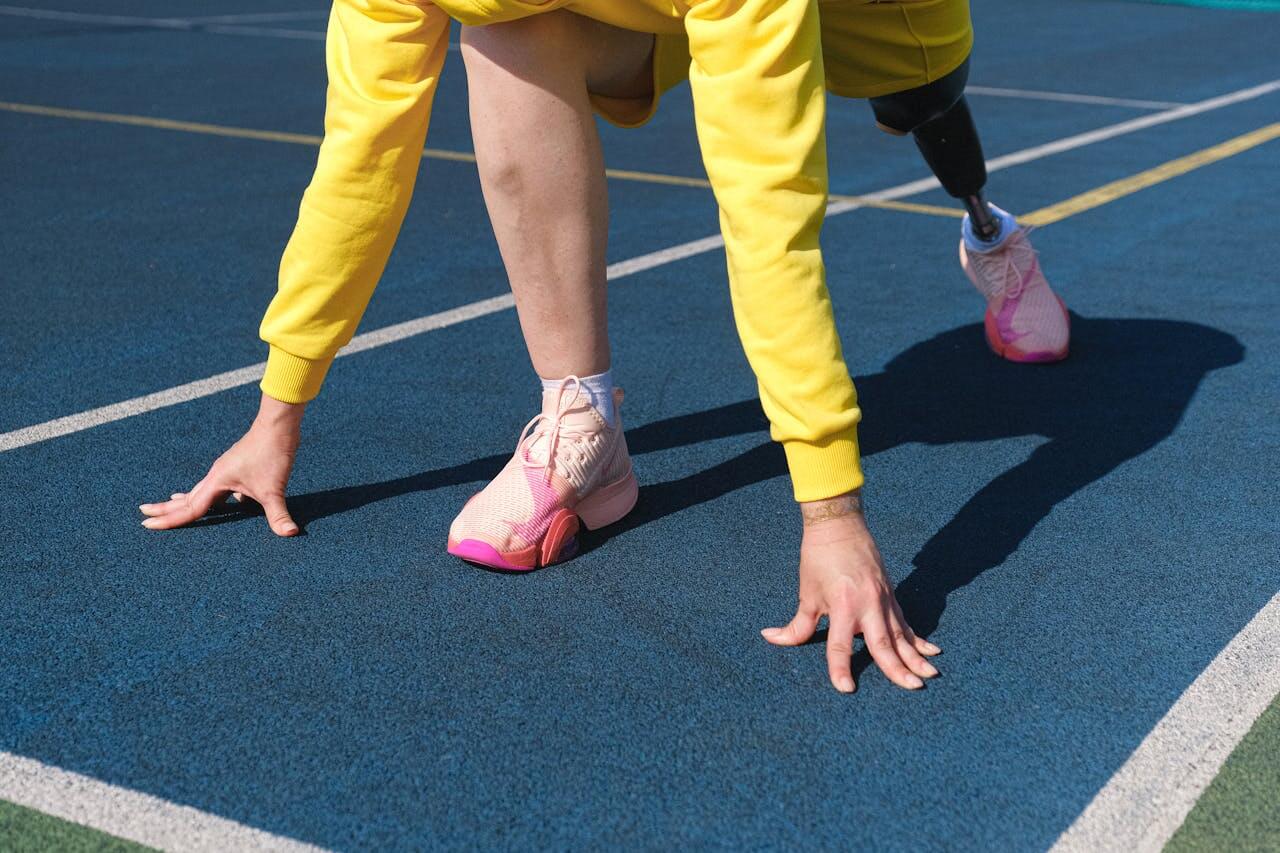Whether you’re new to the world of prosthetics or simply curious, it’s natural to have questions. From how prosthetics work to what life is like wearing one, there’s a lot to learn — and even more to be inspired by.
As prosthetic technology continues to evolve, people are discovering new ways to live fully, move confidently, and regain independence. Below, we’ve answered 10 of the most common questions people ask about prosthetics, from the basics to more practical concerns.
1. What is a prosthetic limb, exactly?
A prosthetic limb is an artificial device that replaces a missing arm, leg, hand, or foot. People may need a prosthesis due to injury, illness, or a congenital condition (being born without a limb).
Modern prosthetics are designed not only to look more natural but also to restore as much function and mobility as possible. Depending on the type, they can be cosmetic, functional, or both.
2. How does a prosthetic limb stay attached to the body?
Great question! A prosthetic limb typically stays attached using a socket — a custom-molded cup that fits snugly over the residual limb. The socket is often paired with:
-
Suspension systems, like straps, vacuum suction, or locking pins
-
Liners, made of silicone or gel, that cushion the limb and reduce friction
The fit of the socket is one of the most important parts of making the prosthesis feel secure and comfortable.
3. Are all prosthetics custom-made?
Yes, for the most part. Every person’s body is different, and so are their needs. That’s why prosthetics are usually custom-designed for each individual.
Prosthetists (the specialists who design and fit prosthetic limbs) consider your height, weight, limb shape, activity level, and goals. Over time, your limb may change, and adjustments or replacements might be needed.
4. What is the difference between a cosmetic and a functional prosthesis?
A cosmetic prosthesis is designed to resemble the appearance of a real limb. It may not have any moving parts but can help with balance and confidence.
A functional prosthesis, on the other hand, is designed to help with movement and tasks. These include:
-
Body-powered prosthetics: Controlled using cables and harnesses.
-
Myoelectric prosthetics: Controlled by muscle signals from your body.
-
Activity-specific prosthetics: Designed for sports, swimming, running, or even music!
Some prosthetics combine both function and appearance.
5. How long does it take to get a prosthetic limb after amputation?
Recovery time varies for everyone. After surgery, it typically takes a few weeks to a few months before you’re ready to be fitted with a prosthesis. This depends on:
-
Healing of the surgical site
-
Strength and range of motion in the residual limb
-
Swelling and shaping of the limb (called “stump shrinkage”)
During this time, you may use a temporary prosthesis or a shrinker sock to prepare your limb for the final fitting.
6. Is it painful to wear a prosthetic limb?
When properly fitted, a prosthesis should not be painful. However, some discomfort or irritation is common at first, especially as your limb adjusts.
That said, persistent pain, pressure sores, or skin issues should be addressed immediately with your prosthetist. Sometimes, a small adjustment in the socket or liner can make a big difference.
7. How much does a prosthetic limb cost?
Costs vary widely based on the type of prosthesis, the materials used, and the level of technology. Here’s a rough idea:
-
Basic limb prosthetics: $5,000–$10,000
-
Myoelectric arms: $20,000–$50,000+
-
High-performance prosthetics for athletes: Even more
In Pakistan and many countries, prices can be lower, and local non-profits may provide subsidized or free prosthetics for those in need.
Keep in mind, prosthetics don’t last forever — most need to be replaced or adjusted every 3–5 years.
8. Can I walk or run with a prosthetic leg?
Absolutely! Many people with lower-limb prosthetics walk, run, hike, and play sports regularly. Walking with a prosthesis requires rehab and physical therapy, but it’s very possible.
There are specialized running blades (you may have seen athletes using them at the Paralympics) designed specifically for high-impact activity. Even children with prosthetics can be very active.
9. How do I take care of a prosthesis?
Taking care of your prosthesis is essential to extend its lifespan and protect your skin. Here are some basic care tips:
-
Clean the socket and liner daily with mild soap and water.
-
Inspect your skin for any signs of redness or sores.
-
Store your prosthesis in a dry, clean area.
-
Visit your prosthetist regularly for checkups or adjustments.
Also, don’t forget to clean and dry your residual limb daily — hygiene matters a lot when you’re wearing a prosthesis for hours at a time.
10. Can I travel with a prosthesis?
Yes, and many prosthetic users travel all the time. However, here are a few things to keep in mind:
-
Airports: Inform security if you have a prosthesis. It might be subject to inspection.
-
Carry care supplies like liners, wipes, and chargers (for bionic limbs).
-
Compression socks or shrinkers help during long flights.
-
Pack smart: If you’re traveling far or to remote places, take extras of any small prosthetic parts or tools you may need.
Many travelers say it just takes a little planning — but nothing should hold you back.
Final Thoughts
Prosthetics have come a long way — from wooden legs to AI-powered bionic arms. But no matter how advanced the technology gets, the human spirit is what truly powers these devices. Whether you’re navigating a new prosthetic journey or just learning out of curiosity, we hope these FAQs helped demystify the topic.
Got more questions about prosthetics? Feel free to drop them in the comments — or reach out to a local prosthetist or support group. There’s a whole community out there ready to support you.



